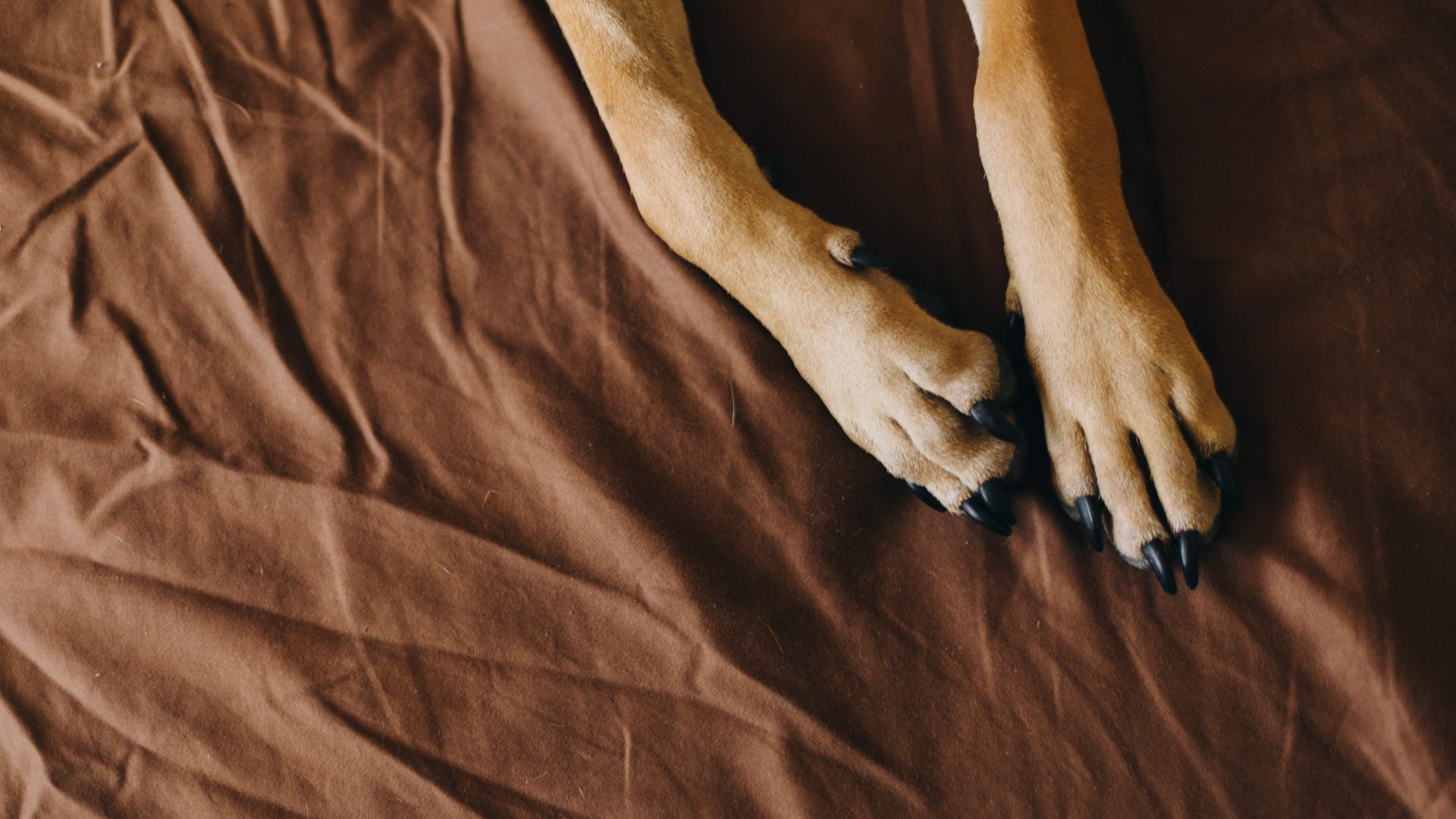
Why do dogs have dewclaws may have been something you wondered as a dog parent. We wanted to know too, so we spoke to vet, Dr. Rebecca MacMillan.
Essentially the thumb of a dog paw, the dewclaw does actually serve a purpose. They help pups on hold to things while they are knawing on them, like the best long lasting dog chews for example. They also help dogs maintain traction while running or turning around while doing their zoomies.
Let's get into everything you need to know about why dogs have dewclaws in the first place and if you need to do anything about them.
Why do dogs have dewclaws?

So, why do dogs have dewclaws? First, let's explain what a dewclaw is. "Dewclaw is the term used to describe the small digit higher up on the side of your dog’s paw. In anatomy terms, it is referred to as digit 1 and it is made up of two small bones and ligaments. The four other toes on their paw (digits 2 to 5) are made up of three bones each," says MacMillan.
Every dog has dewclaws on their paws and they are actually important. As we mentioned earlier, the dewclaw helps pups hold on to items while they are chewing on them. They also help dogs to grip the ground while they running or turning around quickly.
It is also said that dewclaws are similar to the human thumb, and we know how important that is to have. Just the same, dogs also need the dewclaw to help stabilize the wrist and this can be used for things like climbing or even swimming!
Why do dogs have dewclaws removed?

If dewclaws are so helpful why do some dogs have them removed? It is uncommon that dewclaws on the front paws need to be removed. Unless, for medical reasons.
Dewclaws on the back paws are a different story. Dewclaws on the back legs are pretty uncommon but in the case your pup does have them, you may want to consider having them removed.
"They may only be attached by skin making them very mobile and dangly, due to the lack of bones present. This can make them more likely to get caught when running through brambles or thick undergrowth. Hind dewclaws may also be more prone to the nail curling round and becoming ingrown," says MacMillan.
She goes on to say that it is for these reasons that a vet may suggest having them removed. If your pup does have dewclaws on their back legs you will want to speak with your vet if you feel they are causing your dog trouble.

MacMillan also says, "It is generally considered unethical to remove the front dewclaws from dogs, so this should only be done if there is a medical reason. Examples include neoplasia (cancer), severe injury, or serious infection."
Hind dewclaws are more commonly removed, as they can be prone to injury.
"Surgery to remove these dewclaws is less invasive as they are usually only attached by skin. Hind dewclaw removal is often performed at the same time as a routine procedure, like neutering. If your dog has a dewclaw removed, you will need to keep the area clean and dry post-surgery. Monitor closely for any signs of redness or infection."
How to care for dewclaws
Luckily, there isn't much work required to take care of your dog's dewclaws. Trim your dog's nails regularly with one of the best dog nail clippers. If you don't have clippers, never fear, check out our guide on how to cut dog nails without clippers.
MacMillan advises that back nails are not in contact with the ground as often and therefore more prone to becoming overgrown. So make sure not to forget them.
If you found this content helpful be sure to check out How to clip a dog's nails and How to clean dog paws.







